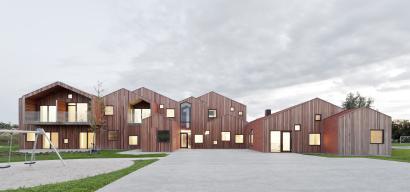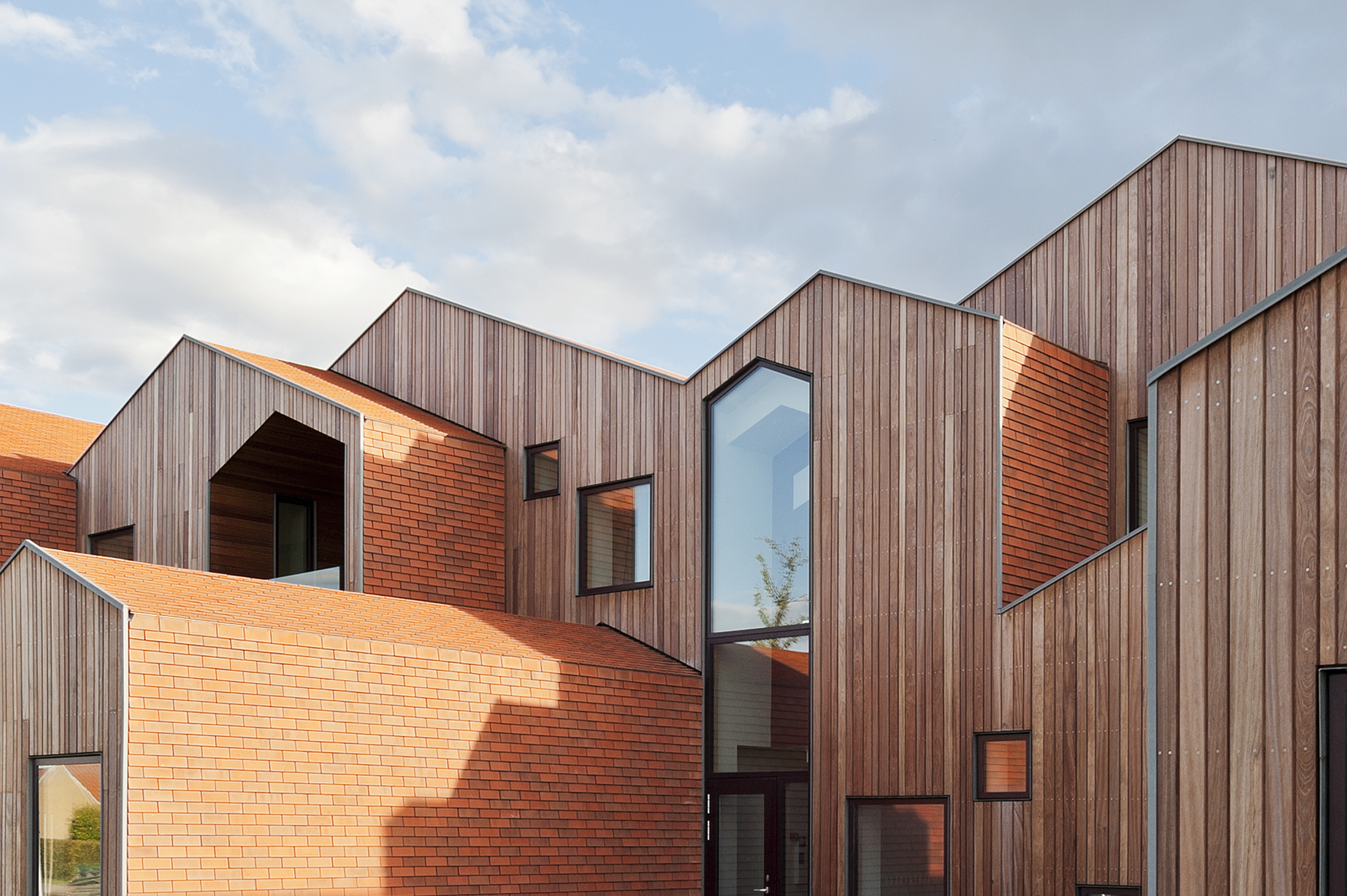The children’s home of the future
The Children’s Home of the Future designed by the Danish architectural firm CEBRA does in no way look like an ordinary 24-hour care centre. Resembling a small village, the children’s home lies at the centre of a detached housing area in Kerteminde and exudes community, warmth and cosiness, and has therefore been named ‘Villaen’ (The Villa). The architecture has proven to be a key educational partner. This applies both in terms of creating security and stability in the residents’ daily lives and when they are in need of intimacy and clearness.
“The architecture of the villa is of great importance to the children’s and young people’s daily lives and well-being. We experience that the layout and functionality of the house help reduce conflicts, and, in many cases, the small day-to-day conflicts have been entirely eliminated. [...] We also notice that our children and young people use us adults more now that we live in the Villa – we talk more and we experience calmer children and young people, who feel safer.” Birgit Hjelme, Director of Villaen
Well-being & Community
The architecture of the Children’s Home of the Future has proven to have a great influence on the children and young people’s well-being. The division of the children’s home into small houses isolates the children’s daily life in small, intimate spaces, communities and adult groups. According to director Birgit Hjelme, the users of the care centre experience that the layout and functionality of the house helps reduce conflicts and that the small day-to-day conflicts in many cases have been entirely eliminated.
”We experience a greater sense of calm and far better cooperation between the children, the young people and the staff. When a conflict arises, the architecture helps limit it so that it does not affect the entire house but instead is isolated to a few persons”, Birgit Hjelme, Director of Villaen
Security & Ownership
A special process to involve the users has given the children and young people an opportunity to leave their own mark on the children’s home. That has helped create a sense of ownership and pride and made the house homey and personal with familiar elements, materials and shapes. The environment is organised around intimate spaces with lots of daylight, making it easy to screen them off and make small groups where the children and young people can stay within clearly defined communities. After the relocation, the staff of the care centre experience that the children and young people feel safer and calmer and that they often reach out for the adults and speak more openly with each other. It has also become easier for the staff to focus on the individual needs of the children and young people.

About the case
The Children’s Home of the Future lies in the middle of some non-detached and detached houses in one of Kerteminde’s residential neighbourhoods. The care centre has two floors consisting of a number of small, staggered and interconnected buildings, making the centre appear as a small village. All facades are covered in tile and wood, and all buildings replicate the distinctive pitched roof of the neighbourhood. The well-known elements and shapes help create a homey environment in modern buildings that focus on the special needs of their residents. The daily activities of the children’s home are organised around four interconnected main houses in order to create independent, varied units for the diverse group of residents. The layout ensures proximity and short distances between the individual units at the centre, so that the staff is always close to the residents. The home is currently approved for 22 children and has been divided into a children’s section and a youth section.
